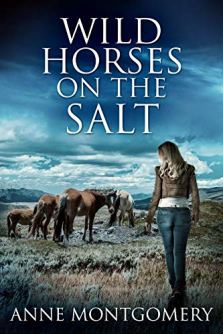I have worked out most of my life. I started ice skating at five. I skied and swam. When I was 24, I started officiating sports and called football, baseball, ice hockey, soccer, and basketball games, an avocation I practiced for 40 years. When I was 30, I got my first health club membership and I have had one ever since.

So, I’m a long-time gym rat. I’ve lifted weights, utilized aerobics equipment, and practiced yoga, but I’m primarily a lap swimmer. I mention this because recently I turned the golden corner for those of us who spend time at the gym. The reason? Silver Sneakers.
For the uninformed, Silver Sneakers is a health and fitness program that provides gym access and fitness classes for older adults. It’s covered by some Medicare plans. That means I no longer have to shell out those monthly fees to the health club.
The idea, of course, is to keep old people moving so they’re less likely to succumb to problems like heart disease, broken bones from falls, high-blood pressure, diabetes, cancer, and obesity. If people get exercise, chances are they won’t become ill or injured, which keeps those Medicare costs down.

I was feeling pretty smug the day I walked into the club and asked to be moved to the Silver Sneakers rolls. I had just finished swimming a thousand meters – sadly, I used to swim two thousand, but as I’ve already intimated I’m old.
“Of course! I’d be happy to help,” a tall, twenty-something smiled down at me. “Sit right here. Just show me your ID and your membership card, Ms. Montgomery.”
I noted he was very solicitous.
After putting the important bits of information into the computer and handing me my new key fob, he placed both elbows on the desk. “Now, we can provide you with a free one-hour counseling session.”
“What for?”
He tilted his head. “To help you learn how to workout.”
I squinted. Did I look like I needed help finding my way around the gym? Did I look like I spent my days on the couch eating Ding Dongs? Did I look like I didn’t know a free weight from a foam roller?
Then, I had an I-glimpsed-myself-in-a-store-window moment. I know you’ve done it. You walk by a reflective surface and the person you see staring back is not the one you always imagined. I was forced to consider how this nice young man saw me. He smiled sweetly. I stared back, realizing I might now appear to be a little old lady.
I said I’d think about the offer. It certainly wouldn’t hurt to see if there’s anything I’ve been missing. I thanked him and left. Though I stared at the floor whenever I got close to a window.
A WOMAN FLEES AN ABUSIVE HUSBAND
AND FINDS HOPE IN THE WILDS OF THE ARIZONA DESERT.
Published by Liaison – A Next Chapter Imprint
Rebecca Quinn escapes her controlling husband and, with nowhere else to go, hops the red-eye to Arizona. There, Gaby Strand – her aunt’s college roommate – gives her shelter at the Salt River Inn, a 1930’s guesthouse located in the wildly beautiful Tonto National Forest.
Becca struggles with post-traumatic stress, but is enthralled by the splendor and fragility of the Sonoran Desert. The once aspiring artist meets Noah Tanner, a cattle rancher and beekeeper, Oscar Billingsley, a retired psychiatrist and avid birder, and a blacksmith named Walt. Thanks to her new friends and a small band of wild horses, Becca adjusts to life in the desert and rekindles her love of art.
Then, Becca’s husband tracks her down, forcing her to summon all her strength. But can she finally stop running away?
Order your copy here: http://mybook.to/wildhorsespb








